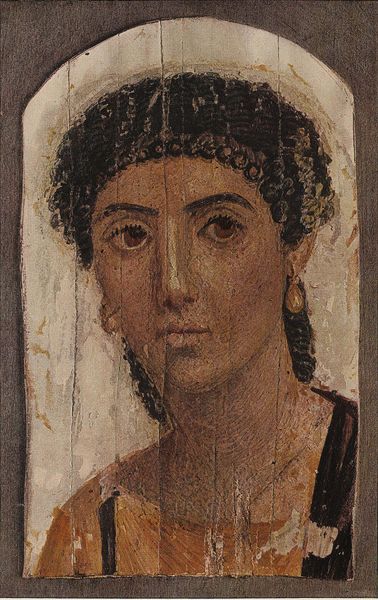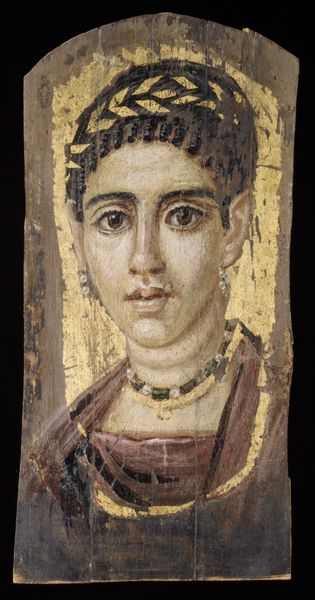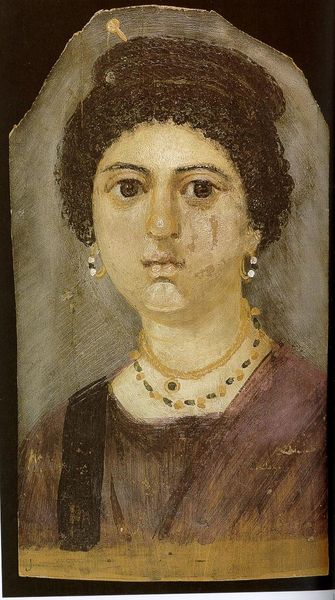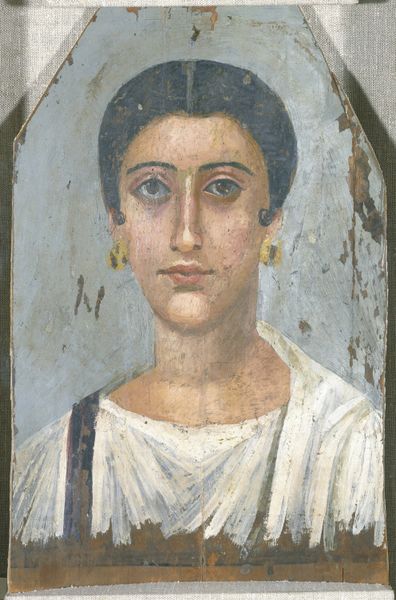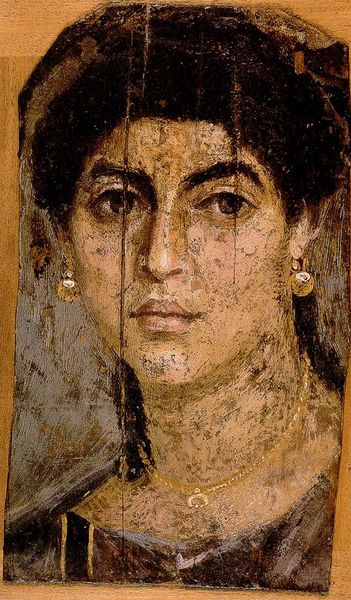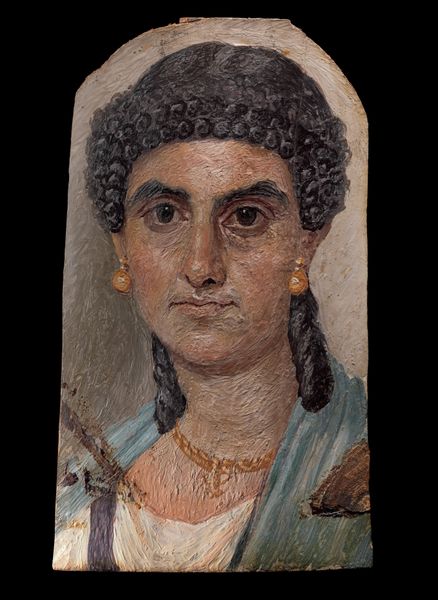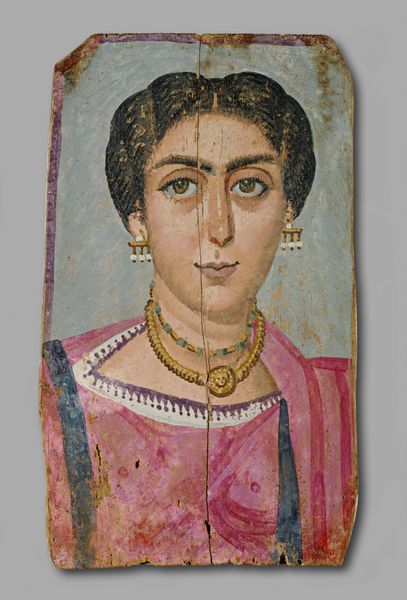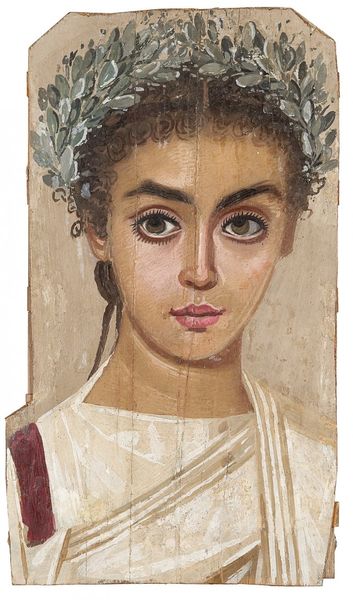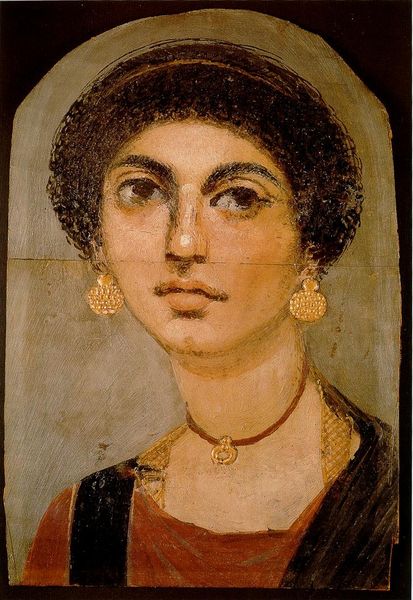
painting, oil-paint, mural
#
portrait
#
self-portrait
#
painting
#
oil-paint
#
ancient-egyptian-art
#
romanesque
#
oil painting
#
ancient-mediterranean
#
academic-art
#
mural
Copyright: Public domain
Curator: What strikes me immediately about this Fayum portrait is its almost unsettling directness. The eyes, slightly enlarged, gaze right through you, timelessly. It's like bumping into a ghost who wants to tell you a secret. Editor: And yet, what's equally striking is how *familiar* that gaze feels, doesn't it? The Fayum portraits, like this one, emerged in Roman Egypt around the 1st century CE. These paintings on wood, often done with encaustic or tempera, were affixed to mummies, creating this fascinating fusion of Egyptian funerary tradition and Roman portraiture. Think of them as ancient profile pictures, really. Curator: Exactly! They aimed for a certain… likeness, didn’t they? Though that word feels too flat here. It's not just a representation; it's an attempt to capture… well, what, the essence of this woman's being? And who *was* she? I bet she loved gossip and spicy food! The necklace of green beads she wears gives me a clue to her character: she had fine taste. Or maybe her husband chose it. Oh, and look at those simple but very graceful pearl earrings. Editor: What’s incredible is how they offer a glimpse into a community grappling with identity. Egypt was under Roman rule, a melting pot of cultures and beliefs. The Roman style coexisting with Egyptian religious rituals. The pearl earrings, as you say, hint at some degree of wealth. Many of those portrayed are elites who wanted to commemorate themselves in a fusion of visual vocabularies. These weren’t mass produced; it was more bespoke than the ready to wear Roman statuary. Curator: That little sprig or stick pinning her hair. I wonder what that signifies. Did it have meaning beyond style? Was it simply the current Roman-Egyptian fad, or did it carry an element of personal significance for the sitter? I almost feel like I should apologize for looking at her so directly after so long, you know? She wasn't expecting visitors from so far into the future! Editor: In the history of portraiture, it is an intriguing collision of personal identity, social forces, and mortuary practices. They’re also among some of the only large corpus of painting from the ancient world – making them indispensable objects of study to our understanding of the evolution of artistic traditions. Curator: So, in a way, they succeeded, didn’t they? We’re still thinking about them, feeling their presence across the millennia. Editor: Precisely, a powerful example of how a carefully constructed image can transcend its original purpose and speak to us across vast stretches of time. A lasting testament of cultural exchange!
Comments
No comments
Be the first to comment and join the conversation on the ultimate creative platform.
